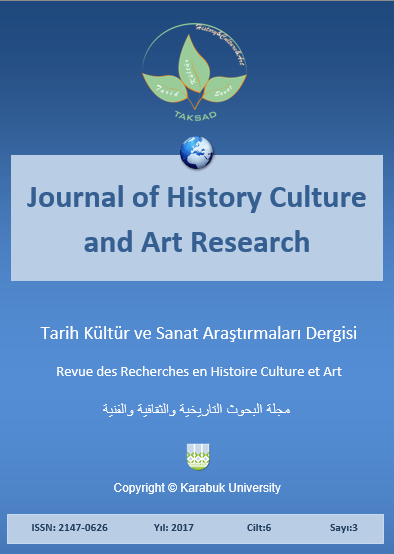New Physics and Schmitt’s Work: The Play of "Einstein’s Treason"
DOI:
https://doi.org/10.7596/taksad.v6i3.974Keywords:
Modern drama, Playwright, Eric-emmanuel schmitt, Play, Einstein’s treason, New physics, Quantum theory, Einstein, Theatre.Abstract
Humankind has walked many roads to achieve understanding of themselves and to discover their own nature as God's creation. The cognition of humanity, God, and nature is a permanent, pervasive issue throughout history. In this quest to discover humanity, the fields of philosophical anthropology and biological anthropology have emerged and developed alongside each other. Science and philosophy are also trying to find a way to explain creation with all various products created throughout the history. But the noticeable point is the fact that a number of play writers have stepped in to ease the way for a better understanding of complicated concepts such as theology and anthropology in regard to philosophy and physics, and help to facilitate this understanding by creating literary work. Eric-Emmanuel Schmitt (1960) as a contemporary writer had focused his attention on the achievements of science and new physic in recent decades. His works invites the audience to think and contemplate on meaning and, once again, raise issues of human existence and life’s meaningful activities. This paper attempts to investigate Eric-Emmanuel Schmitt as a modern dramatist through a detailed, qualitative and critical analysis of one of his most important works, Einstein’s Treason. In Einstein’s Treason, physics and Einstein's life has been used widely. The study explored how the concept of new physics and quantum theory could be incorporated in to literature of drama in Einstein’s Treason.
References
Alastair, I. M. (2006). Quantum Physics: A Beginner's Guide. UK: One world Publications.
Hawking, Stephan (2009). The Universe in a Nutshell. Tehran: Harir Press.
Hedeger, Martin (2006). Modern Hermeneutics. Tehran: Markaz Press.
Heisenberg, Werner (1958). Physics and Philosophy. New York: Unwin University book.
Jauch, J. M. (1970). Are Quanta Real?. Bloomington: Indiana University Press.
John C., Lilly (1972). The Human Biocomputer. New York: Bantam Books.
Mc. Mahom, D. B. (2005). Quantum Mechanics Demystified. (2007) 2nd Edition, Chicago: The university of Chicago Press.
Picker Nick, Kent (2012). Understanding modern drama. Translated by Naser Dasht Peima. Trhran: Namayesh Publication.
Poul, Castagno (2008). New Playwriting Strategies A language Based approach to Playwriting. Tehran: Samt Press.
Shankar, R. (1994). Principles of Quantum Mechanics, 2nd edition. New Delhi: Plenum.
Schmitt, Eric-Emmanuel (2006). Monsieur Ibrahim and the Flowers of the Quran. London:UK Press.
Schmitt, Eric-Emmanuel (2002). Dongguan trial, The visitor, Enigma variations,Between worlds. Britain: S.M. Press.
Schmitt, Eric-Emmanuel (2014). Frederick or the Crime Boulevard, Einstein's Treason. Britain: S.M. Press.
Schmitt, Eric-Emmanuel (2015). Einstein's Treason. Tehran: Ghatreh Press.
Saraswati, Pratyagatmananada (1964). The Metaphysics of Physics. Ganesh, India: Madras.
Werner, Heisenberg (1958). Physics and Philosophy. New York: Harper Torch books.
Worthen, William B. (2003) . Modern Drama / Volume 2. Boston: Heinle & Heinle.
Downloads
How to Cite
Issue
Section
License
All papers licensed under Creative Commons 4.0 CC-BY.- Share — copy and redistribute the material in any medium or format
- Adapt — remix, transform, and build upon the material for any purpose, even commercially.
Under the following terms:
Attribution — You must give appropriate credit, provide a link to the license, and indicate if changes were made. You may do so in any reasonable manner, but not in any way that suggests the licensor endorses you or your use.
- No additional restrictions — You may not apply legal terms or technological measures that legally restrict others from doing anything the license permits.







